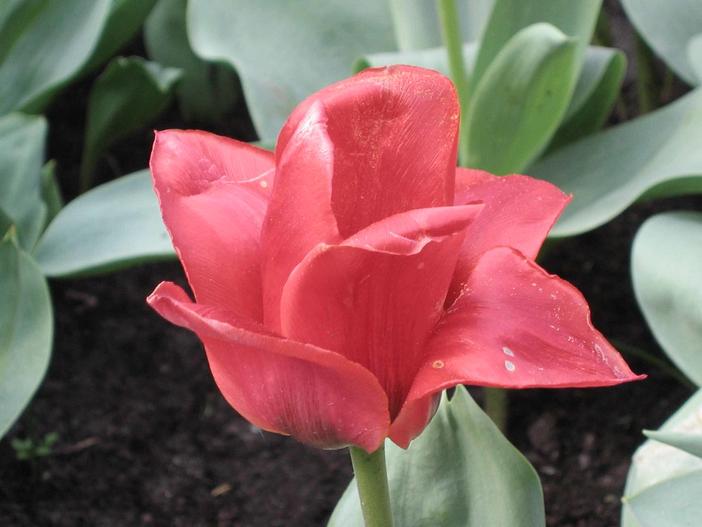Greig’s Tulip
(Tulipa greigii)
Greig’s Tulip (Tulipa greigii)
/
/

阿橋花譜 HQ Flower Guide
CC BY-SA 2.0
Image By:
阿橋花譜 HQ Flower Guide
Recorded By:
Copyright:
CC BY-SA 2.0
Copyright Notice:
Photo by: 阿橋花譜 HQ Flower Guide | License Type: CC BY-SA 2.0 | License URL: https://creativecommons.org/licenses/by-sa/2.0/ | Uploader: 阿橋 KHQ | Publisher: Flickr















Estimated Native Range
Summary
Tulipa greigii, commonly known as Greig’s Tulip, is a deciduous perennial bulb native to the rocky subalpine meadows and slopes of Central Asia, particularly Kazakhstan, Uzbekistan, and Kyrgyzstan. It typically grows to a height of 0.5-2 feet (15-60 cm) and a width of 0.5-0.9 feet (15-30 cm). The plant is characterized by its large, brightly colored flowers that can be black, yellow, green, orange, pink, or red, blooming in early to mid-spring. The flowers are particularly showy, with a distinctive mottled or striped foliage that adds to its ornamental value. Greig’s Tulip is known for its striking appearance when in bloom.
Greig’s Tulip is valued in cultivation for its vibrant and diverse flower colors, which make it a popular choice for spring displays in gardens, borders, and as a cut flower. It requires full sun to thrive and prefers well-drained soils, although it can tolerate medium drainage. The bulbs should be planted in the fall, at a depth of about three times their size. Greig’s Tulip is relatively low maintenance but may require protection from rodents and other pests that can damage the bulbs. It is not typically associated with serious diseases or other horticultural problems. However, it is important to avoid overwatering, as this can lead to bulb rot. After flowering, the foliage should be allowed to die back naturally to ensure the bulbs can store enough energy for the next growing season.CC BY-SA 4.0
Greig’s Tulip is valued in cultivation for its vibrant and diverse flower colors, which make it a popular choice for spring displays in gardens, borders, and as a cut flower. It requires full sun to thrive and prefers well-drained soils, although it can tolerate medium drainage. The bulbs should be planted in the fall, at a depth of about three times their size. Greig’s Tulip is relatively low maintenance but may require protection from rodents and other pests that can damage the bulbs. It is not typically associated with serious diseases or other horticultural problems. However, it is important to avoid overwatering, as this can lead to bulb rot. After flowering, the foliage should be allowed to die back naturally to ensure the bulbs can store enough energy for the next growing season.CC BY-SA 4.0
Plant Description
- Plant Type: Bulb
- Height: 0.5-1.5 feet
- Width: 0.5-0.9 feet
- Growth Rate: Moderate
- Flower Color: Yellow, Orange, Pink, Red, White
- Flowering Season: Spring
- Leaf Retention: Deciduous
Growth Requirements
- Sun: Full Sun
- Water: Medium
- Drainage: Medium
Common Uses
Bank Stabilization, Border Plant, Erosion Control, Low Maintenance, Potted Plant, Rock Garden, Salt Tolerant, Showy Flowers
Natural Habitat
Rocky subalpine meadows and slopes of Central Asia
Other Names
Common Names: Strimtulpan
Scientific Names: , Tulipa greigii, Tulipa mogoltavica, Tulipa altaica var. karatavica, Tulipa greigii subsp. aurea, Tulipa greigii var. campanulata, Tulipa greigii var. flava, Tulipa greigii var. typica, Tulipa karatavica, Tulipa krauseana,
GBIF Accepted Name: Tulipa greigii Regel